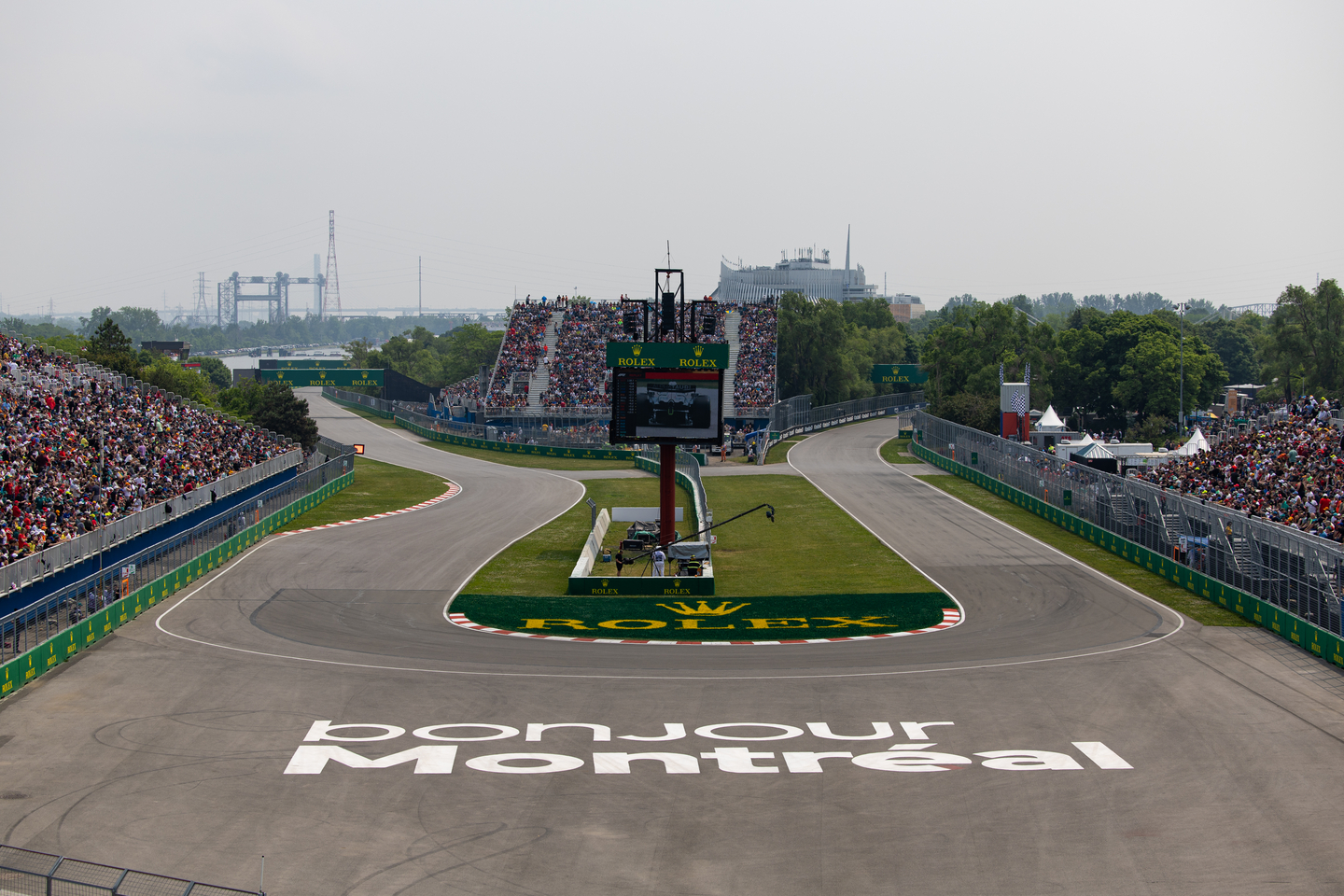Canadian Grand Prix™ Travel Guide
Your guide on how to get to Circuit Gilles Villeneuve, where to explore & other important information to know before you go.
Practical Information
- Visas: Citizens from the USA, European Union, Australia and a host of other countries can visit Canada without a visa, but you will still need to apply for an Electronic Travel Authorization.
- Currency: Canadian dollar. ATMs are easy to find and credit cards are widely accepted.
- Language: French is Montréal’s official language, though you won’t have a problem getting by in English.
- Time Zone: UTC –4 hours
- In an Emergency: Dial 911 to be connected with the proper emergency personnel.
- Power Sockets: Canada uses Type B power sockets, the same as in the USA. Bring an adapter if you are travelling from a different part of the world.
- Weather: For the Canadian Grand Prix™, temperatures should range from around 24°C (75°F) during the day to 15°C (59°F) at night. Rain is possible so, pack accordingly!
Arrival & Getting Around
Flights to Montréal
Montréal–Pierre Elliott Trudeau International Airport (YUL) is the main hub for domestic and international flights to Montréal. Located around 20.0 km (12.4 mi) from downtown, YUL is the third busiest airport in Canada and a major hub for Air Canada. In addition to domestic connections, Montréal Airport has direct flights to Africa, Asia, Europe, North America and South America.
Got some more time? The daily “Adirondack” train service from New York to Montréal is rated one of the most scenic train journeys in the world and travels through the Hudson Valley wine region.
Where to stay
To get the most out of your weekend at the Canadian Grand Prix™, we recommend staying in downtown Montréal, especially within walking distance of the Berri UQAM metro station.
F1® Experiences offers a selection of the best hotels in Montréal. If you are still looking for accommodation, contact your Sales Representative for more information about available hotel options.
How to get to Circuit Gilles Villeneuve
Public Transportation
The closest metro stop is Jean Drapeau, which is on the Yellow Line (Metro Map) and just one stop from Montréal’s main interchange station, Berri-UQAM. After exiting the metro on St. Helen’s Island, you’ll need to walk across one of two bridges to the circuit - the closer Cosmos Bridge is good for Grandstands near the hairpin (15, 24, 31, 34, 46, 47), while the further Pont des Îles is good for Grandstands 1, 11 and 12 and the Montréal Casino. Don’t forget to buy a ticket for your return journey ahead of time to avoid queuing for the ticket machines.
The Navettes Maritimes River Shuttle also travels from the old port near downtown or Longueuil to Parc Jean-Drapeau. This service only operates once per hour, and only on weekend days.
Taxi & Ride Sharing
There’s a taxi drop-off point on St. Helen’s Island near the Concorde Bridge, but traffic on the island can get very congested at peak times and queues for taxis at the end of the day are sizeable. It’s better to take the Metro or walk back across the Concorde bridge to downtown Montréal, where you can more easily take a taxi to your final destination.
Hire A Car
Not recommended. There’s no reserved parking at the circuit and vehicular access is severely restricted.
Walking
It is possible to walk from downtown Montréal all the way to the circuit, using the Concorde Bridge. This can be a good idea at the end of the day when the Metro is overcrowded, and you’ll also get to see the world-famous Habitat 67 housing community.
F1® Experiences
Booked accommodation along with your Official Ticket Package from F1® Experiences? Daily transfers to and from the circuit can be added to your Official Ticket Package for an additional cost.

Things to see & do in Montréal
Parc Jean-Drapeau
Extend your day at the track – and escape the post-race crowds on the Metro – by checking out one of Montréal’s most popular recreational spaces, Parc Jean-Drapeau. The park is made up of two islands; the man-made Notre Dame Island, where the circuit is located, and the larger St Helen’s Island. Notre Dame hosted rowing and canoeing events during the 1976 Olympic Games and has just undergone a sizeable modernization, including the construction of a new 65,000 seat natural amphitheatre. Other Parc Jean Drapeau landmarks worth checking out, all of which date back to the Expo67 World’s Fair, include the Montréal Biosphere, Montréal Casino and Six Flags amusement park. The Habitat 67 modernist housing complex is also nearby, just a short walk over the Concorde Bridge in the direction of the city centre.
Old Montréal
Take a walk through one of the oldest districts in all of North America, where many buildings date back to the 17th century. Highlights include Place d’Armes and the imposing Notre Dame Basilica, the Old Port and Montréal Observation Wheel, the imposing City Hall and Rue Saint-Paul, Montréal’s oldest street.
Parc Mont-Royal
The park that gives Montréal its name occupies a stunning elevated location with sweeping skyline views. Designed by Frederick Law Olmsted, who was also responsible for New York’s Central Park, Parc Mont Royal is home to historic monuments, playgrounds, picnic areas and walking paths. Worth a visit for the city views alone.
Olympic Park
The host country may not have won any gold medals, but the 1976 Summer Olympics in Montréal were a success and Parc Olympique boasts several of the city’s most popular tourist landmarks, notably the ‘tallest inclined tower in the world’ with panoramic views of up to 80.0 km (49.7 mi) on clear days and the Biodôme, which recreates several American ecosystems in the building that once housed the Olympic velodrome.






